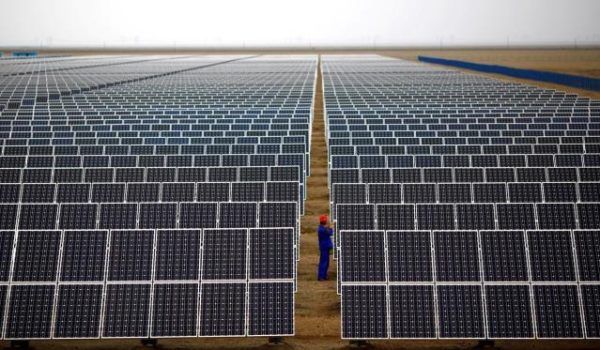
Quartz is a very high-quality material with properties such as high hardness, resistance to high temperatures, chemical stability, and optical properties. These advantages make quartz widely used in the fields of optics, electronics, semiconductors and solar energy.
1. Excellent high temperature resistance
During the manufacturing process of photovoltaic panels, silicon wafers need to be bonded to glass to form the basic structure of the solar panel. At this time, since high-temperature sintering is required, materials with high temperature resistance need to be used for support. Quartz meets this need due to its excellent resistance to high temperatures.
2. Has excellent optical properties
Quartz has excellent optical properties and can be used in high temperature and even extreme ultraviolet environments, with high transmittance and reflectivity. Therefore, when quartz is used to manufacture solar panels, it can improve the power generation efficiency of the battery.
3. Has good chemical stability
In the manufacturing process of solar panels, it is often necessary to use some chemical reagents or liquids. If some unstable materials are used, it is easy to obtain unstable results. Quartz has good chemical stability and can resist chemical corrosion and ensure the long-term stability of solar panels.
Quartz used in photovoltaic glass
Photovoltaic glass is not easily damaged by ultraviolet and high-energy radiation. Light can pass through quartz glass in a functionalized optical path with little distortion. Quartz used in solar cell production is virtually inert, very resilient, and able to withstand the high temperatures experienced during semiconductor production and evaluation.
Therefore, photovoltaic glass does not have particularly high requirements for the purity of quartz sand, but has higher requirements for the light transmittance of the glass. Quartz sand is melted at high temperatures to make quartz glass, which is then processed through special processes to make photovoltaic glass.
Quartz is used in the crucible link
With the continuous optimization of crucible manufacturing technology and rod drawing technology, in order to meet the multiple charging processes, the size of quartz crucibles has developed from the original 16 inches to 32 inches and above. According to CPIA, the feeding capacity of a single furnace for drawing rods in 2021 (one The total input amount of crucibles used for multiple drawing rod production) has increased from 1,900kg in 2020 to 2,800kg. At present, the service life of long-life quartz crucibles can reach 300 to 400 hours.
High-purity quartz sand accounts for 62% of the cost of quartz crucible and is the most important cost component. Auxiliary materials, labor, equipment depreciation, and water and electricity account for 6%, 6%, 2%, and 7% of the cost respectively.
Other applications
Quartz is widely used in many aspects of the silicon wafer production process, such as silicon-based crucibles used in silicon purification and crystal growth, silica and alumina used in silicon wafer surface coatings, and solar cell packaging. Quartz glass, etc.
Silicone mainly plays a sealing role, sealing the interface between each component and the aluminum alloy frame, the component and the junction box, etc. At present, silica gel is mostly produced from metallic silicon. The requirements for quartz resources for silica gel are lower than those for polycrystalline silicon and monocrystalline silicon. Generally, quartz sand with quality SiO2>99.0% can be produced from quartz resources.
Aluminum alloys mainly add a small amount of metallic silicon during the smelting process to enhance performance. Silicon metal used in smelting is similar to silica gel and has lower quality requirements for quartz sand.
At the same time, quartz can also be used in high-temperature energy storage systems to store excess solar power produced, thereby achieving a continuous and stable supply of solar power.
In short, quartz sand is widely used in the photovoltaic field, mainly in photovoltaic glass and crucible links. The application of quartz sand in the crucible link requires high purity, high durability and long life. It is believed that with the continuous development and progress of solar energy technology in the future, the application prospects of quartz sand in the photovoltaic field will be broader.
